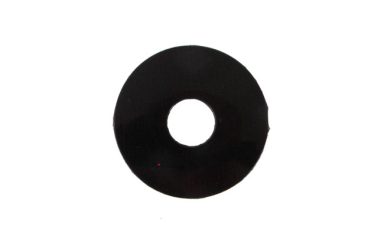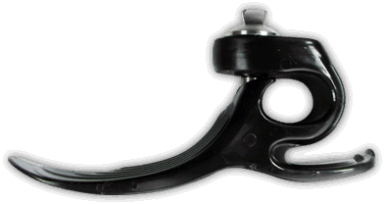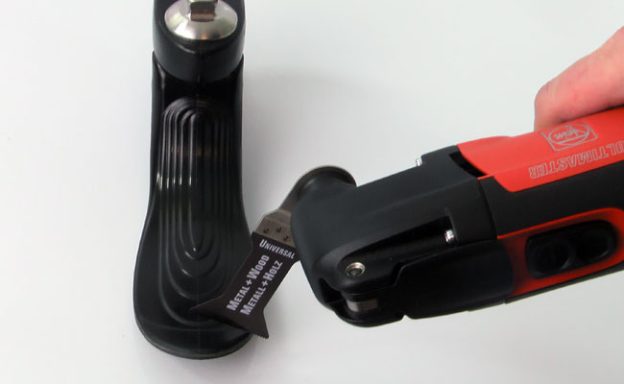
Adjustable resistance
Efficient energy management
Biomechanical movement
Energy-saving cost-effective solution
Waterproof and maintenance-free

From concept to reality!
The Niagara Foot is a dynamic energy-storing prosthetic foot, which was developed by Rob Gabourie CP (c) in collaboration with various research institutions. . The foot is made out of Hytrel ® which is an engeneered polymer devolped by DuPont™ and which produces superior function, ensures high energy efficiency and durability. The smooth action of the foot reduces the biomechanical forces acting on the residual limb.
The Niagara Foot is maintenance free, water resistant and can be dynamically modified by the prosthetist in order to adapt it optimaly to the gait cycle and the weight of the amputee. It is an excellent all round foot, suitable for the Mobility grades K1 - K4. It was extensively tested in numerous field tests and according to ISO 10328 standard on the P5-100 kg protocol.
Biomechanics

The design has been refined and field tested by an
international team of researchers, including Dr. Tim
Bryant (Human Mobility Research Centre, Queen's
University and Kingston General Hospital, Canada)
and Ing. Heinz Trebbin (Universidad Don Bosco, El Salvador).
The Niagara Foot Keel is comprised of a number of sections.
The design concept was to develop an adjustable dynamic
keel that, if desired, could be cosmetically enhanced using
standard cosmetic foot shells. The keel has five main
sections consisting of the Platform, Dynamic C Coil, Horns,
Heel Lever and the Forefoot Lever (see image below).
The way it functions is at heel strike, the platform starts to open
and flex upwards. At the same time it will open the gap that is
between the platform and the horns. That motion relies on having
the proper flexibility in the Dynamic C Coil.
As the foot moves into mid-stance and the patient moves forward
the foot is placed in neutral. There is now floor contact at both the
heel and the forefoot. This causes the gap to close making the
system stiffer but maintaining some flexibility. At this stage the
horns and platform come in contact which helps to transfer energy
to the Forefoot Lever. In the toe off phase of the cycle the Forefoot
Lever is loaded which transfers energy into the follow through phase
of the cycle.

Technische Daten und Spezifikationen
Activity level: M1-M4
Maximum weight: 125 kg
Adjustable from 24 cm to 29 cm
Unilateral
Construction criteria: Endoskeleton
Heel height: 10 cm
Pyramid and stainless steel screw: 459
Tightening torque of the screw during assembly = 30 Nm
Bench Aligment
Initial bench alignment would place the weight line between the markings indicated.
The weight line seldom falls proximal (posterior) to
the center line of the bolt connection to the Titanium adapter.
Trochanter, Knee, Ankle (TKA) Alignment must be
considered in Trans-Femoral(T/F) applications.
The weight line seldom falls distal (anterior) to the
center line of the Niagara Foot. Remember there are
exceptions to every rule!
Practice your standard bench alignment techniques.
Set your static alignment slightly anterior (distal) to
your standard bench alignment protocol.


Dynamic Alignment
If your patient has been using any other foot, the
Niagara Foot may feel completely different to them. Most clients require time to adjust to the additional mobility
the Niagara Foot provides.
Adjustments along with a learning curve will be required.
A controlled gait specific learning period would be beneficial.
Once the practitioner realizes the effective dynamic
diversification available with the Niagara Foot their
prosthetic management capability will improve.
Left & Right great toe profiles can be implemented to
provide custom gait toe offs. The Hytrel® polymer
developed by DuPont™, is easily machined.
Note the reduction steps x 5 in the Forefoot Lever.
(Click first image for a larger view)
The length of the Niagara Foot can be shortened as
required. Consider heel and forefoot reductions for
smaller foot sizes.
Extension beyond 28 cm are at the practitioner's
discretion.
Dynamic Modifications
The Niagara Foot's recognized weight limit for a M3 ambulator is 100 kgs. Heavier clients at lower M levels should be managed at the discretion of the Prosthetist.
The heel, Dynamic C Coil and Forefoot Levers throughout the Niagara Foot can be softened by reducing the Hytrel® thicknesses in the Niagara Foot Keel.
This can be accomplished by using a wood rasp and or staged abrasive removal of the thickness indicators.
Final finish must be smooth and notch free.
The Anterior-Posterior(A-P) positioning of the energy return foot may affect the speed with which the different stages are reached within the gait cycle.
Shift the foot posterior or socket anterior if the mid stance position is reached too early.
Shift the foot anterior or socket posterior if the heel-to-toe movement is too rapid.
If the heel is too stiff the patient may experience toe slap, minimum energy return, loss of prosthesis control and or knee instability.
Remedies include moving the socket posterior, the foot anterior or softening the Heel Levers stiffness.
Reduce the heel stiffness by removing Hytrel® thickness from the heel section. There are 4 levels of reduction adjustment.
Reductions can be accomplished by using a wood rasp and/or mechanically using your shaft carver. Final finish must be smooth and notch free.
If the client feels that the toe is too stiff, dorsiflex the foot or move the foot posterior. If this does not give desired relief you may also soften the forefoot lever.
Reduce the forefoot lever stiffness by removing Hytrel® thickness from the forefoot section. There are 5 levels of reduction adjustment. Remove one level at a time.
Reductions can be accomplished by using a rough file and/or mechanically using your shaft carver.
Final finish must be smooth and completely notch free.
Reduce the Dynamic C section stiffness by removing Hytrel® thickness from the Dynamic C Profile section.
There are 4 levels of reduction adjustment. Reductions can be accomplished by using a rough file and/or mechanically using your shaft carver.
Final finish must be smooth and in particular notch free.
It is not recommended that the original staged thickness profiles be exceeded. All reductions performed must consider reasonable weight and activity adjustments implemented by the practitioner. Take your time, you can always take more material off, you can't replace it!
While Dupont's™ Hytrel® polymer is not overly notch sensitive it is important to smooth out all modifications performed on the Niagara Foot Keel.
Removal beyond the thickness indicators voids all warranties on the foot.
Before the foot is dispensed place a very small amount of lithium grease between the horns and the platform.
It is natural for the top of the horns to be seated into the platform and washer to accommodate the clients gait pattern. Lubricant maintenance will reduce the wear and extend the keel's life span.
Lubrication can be repeated if the foot should give any undesired sounding. If sounding persists place the anti-sounding washer provided between the Horns and the 22 mm washer. If the horns have not seated into the foot bolt washer themselves you may need to relieve the inside edges of each horn to clear the 22 mm washer.
It is recommended that the registered Niagara Foot keel be inspected on a biannual schedule and maintained, as necessary, by a recognized & qualified Prosthetist and or their qualified technical representative.
Niagara Foot Covers are available in sizes 24-28 CM, Light Tone (LT) and Medium Brown (MB).
M1, M2 and M3 Modifiers
M1 - LOWER EXTREMITY PROSTHESIS FUNCTIONAL LEVEL 1
Has the ability or potential to use a prosthesis for transfers or ambulation on level surfaces at fixed cadence. Typical of the limited and unlimited household ambulator.
M2 -LOWER EXTREMITY PROSTHESIS FUNCTIONAL LEVEL 2
Has the ability or potential for ambulation with the ability to traverse low level environmental barriers such as curbs, stairs or uneven surfaces. Typical of the limited community ambulator.
M3 – LOWER EXTREMITY PROSTHESIS FUNCTIONAL LEVEL 3
Has the ability or potential for ambulation with variable cadence. Typical of the community ambulator who has the ability to transverse most environmental barriers and may have vocational, therapeutic or exercise activity that demands prosthetic utilization beyond simple locomotion.
For more information see:
www.medicalbillingcptmodifiers.com/2010/05/ko-k1-k2-k3-and-gl-modifiers.html
Urheberrecht ©
Alle Rechte vorbehalten.
Wir benötigen Ihre Zustimmung zum Laden der Übersetzungen
Wir nutzen einen Drittanbieter-Service, um den Inhalt der Website zu übersetzen, der möglicherweise Daten über Ihre Aktivitäten sammelt. Bitte prüfen Sie die Details und akzeptieren Sie den Dienst, um die Übersetzungen zu sehen.
















